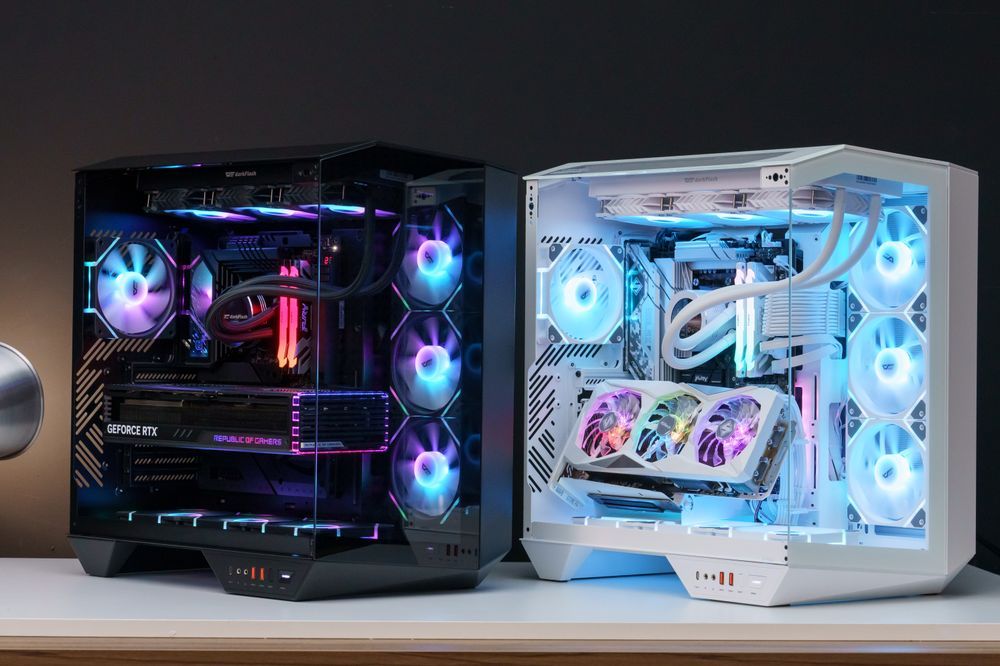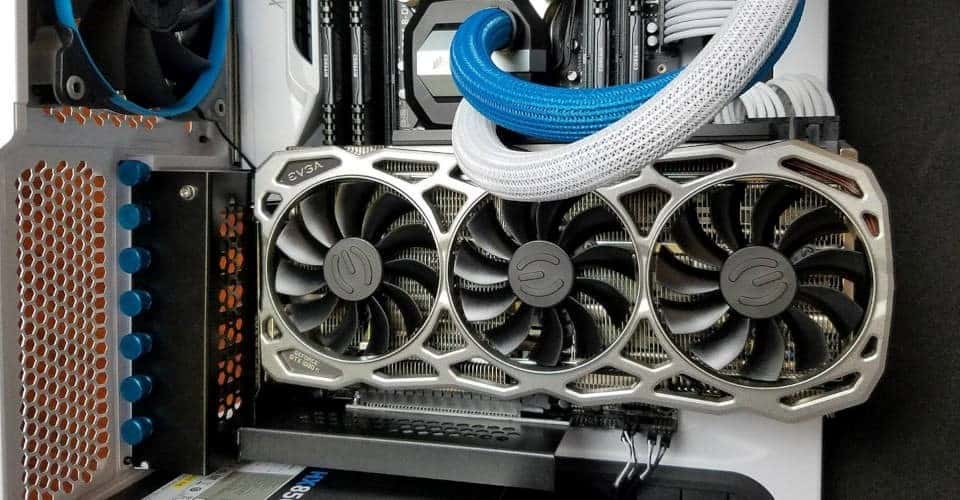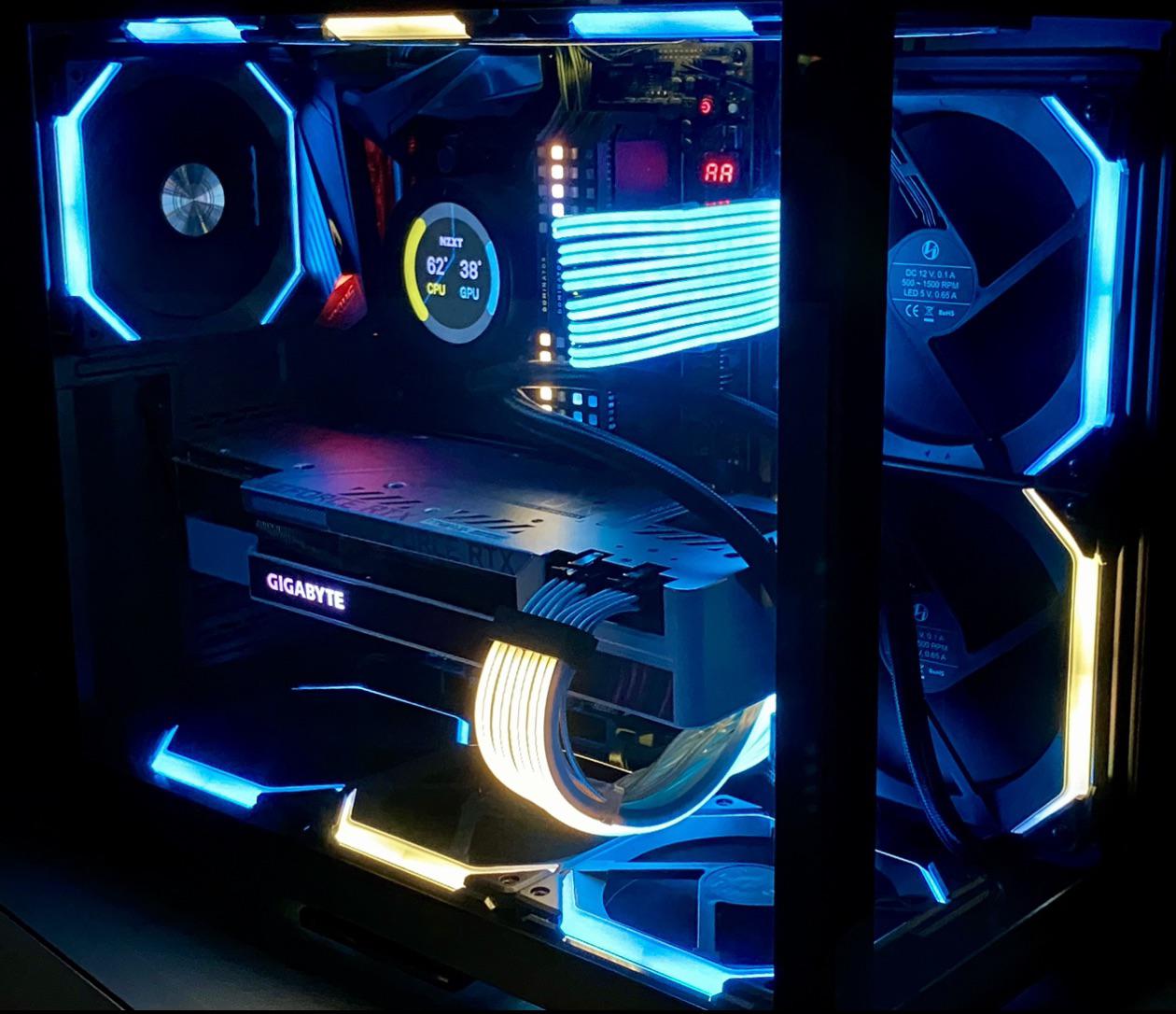In the world of custom PC builds, how your rig looks is just as important as how it performs. One growing trend in PC building is the vertical GPU mount. This setup not only showcases your graphics card’s design and lighting but can also impact airflow and system layout.
Whether you’re a gamer, content creator, or just love building clean and modern PCs, this detailed guide will walk you through everything you need to know about vertical mounting your GPU.

Traditionally, GPUs are mounted horizontally — parallel to the motherboard. In a vertical mount, the GPU is installed perpendicular to the motherboard, so the front-facing side (with fans and RGB lighting) is clearly visible through your side panel (usually tempered glass).
This mounting style became popular due to:
- The rise of tempered glass side panels
- Stunning GPU designs with RGB lighting and custom coolers
- A desire for a cleaner and more impressive build aesthetic
To vertically mount a GPU, you’ll need:
Some PC cases come with a built-in vertical slot, but if not, you can buy a bracket like:
- Cooler Master Vertical GPU Holder V3
- Phanteks Vertical GPU Mount
- Lian Li O11D Vertical GPU Bracket
A riser cable connects your GPU to your motherboard at an angle. It plugs into your PCIe x16 slot and allows the GPU to be installed away from the board.
Tip: Use a high-quality PCIe 4.0 riser for newer GPUs like the RTX 4080/4090 or RX 7000 series.
Not all cases support vertical mounting. Some may block airflow or simply lack the physical slots. Make sure your case supports at least 3-slot or 4-slot vertical GPUs.
Most modern graphics cards feature stunning designs, RGB lighting, custom coolers, and branding. A vertical mount brings this to the forefront, literally.
Heavy GPUs can sag over time, bending the PCIe slot and looking unattractive. Vertical mounts prevent sag completely by supporting the GPU vertically.
Vertical mounting can give you better routing space for cables and make your build look cleaner overall.
In tight cases, horizontal GPUs might interfere with front-mounted radiators or bottom fans. A vertical GPU gives more room in some setups.
While vertical mounting looks amazing, it’s not perfect. Here are some downsides:
If your GPU fans are close to the side panel glass, they may not get enough fresh air, leading to higher temperatures.
Vertical GPUs take up more physical space inside your case. Some can block other PCIe slots or prevent installation of capture cards or sound cards.
A vertical bracket and high-quality PCIe riser cable can cost an extra $30–$80 depending on the brand and version.
- 💻 Showpiece Gaming Builds – Highlight your RTX 4090 or RX 7900 XTX in full glory.
- 🎥 Content Creation Systems – Combine aesthetics with practical airflow and organization.
- 🎮 Streamer Setups – Make your setup look more professional and attractive on camera.
- ⚙️ Open-Air Test Benches – Easier GPU swapping and better airflow control.

Here’s a quick step-by-step installation process:
Confirm that your case supports vertical GPU mounting. Some may need a DIY mod or special adapter.
Attach the vertical bracket or swap out the case’s PCIe slot covers as needed.
Plug one end into the motherboard’s PCIe x16 slot and the other into the GPU.
Secure the GPU onto the vertical bracket and ensure it’s stable. Connect power cables properly.
Boot your system and monitor temperatures under load. Adjust fan curves or case airflow if temps are high.
- Use cases with at least 7 slots for better GPU clearance
- Leave 2–3 cm of space between GPU and glass panel if possible
- Position intake fans at the bottom or side for optimal airflow
- Use custom GPU fan curves to control temps during gaming
Short answer: No. Vertical mounting has no direct effect on FPS or GPU rendering speed. However, by improving airflow and reducing sag, it can help your GPU run cooler and more consistently, especially during long sessions.
In some cases, better cooling means higher sustained boost clocks, which can lead to slightly better real-world performance.
Here are some popular mid and full-tower cases that support vertical GPU setups:
| Case Model | Vertical Mount Support | Size |
| Lian Li O11 Dynamic XL | Yes (built-in) | Full Tower |
| NZXT H9 Flow | Yes (w/ riser) | Mid Tower |
| Cooler Master HAF 700 | Yes | Full Tower |
| Corsair 5000D Airflow | Yes (w/ bracket) | Mid Tower |
| Fractal Design Meshify 2 | Yes (w/ upgrade kit) | Mid Tower |
| Component | Average Price |
| Vertical Bracket | $20–$40 |
| PCIe Riser Cable | $25–$60 |
| Compatible Case (if needed) | Varies |
Overall, expect to spend $50–$100 extra to set up a vertical GPU mount.
A: No. Your case must have vertical slots or be modified with a bracket.
A: Sometimes — especially if airflow is blocked by the glass panel. Proper case fans help reduce this.
A: Yes, as long as it’s installed securely and temperatures are under control.
A: No, if you use a good quality PCIe 4.0 cable with a compatible motherboard and GPU.
A: No, but it helps with aesthetics and can improve cooling in well-ventilated cases.
If you’re building a custom PC and want it to look great, vertical GPU mounting is a good choice. It shows off your graphics card and gives your build a clean look. Just make sure your case has good airflow, you use a strong PCIe riser cable, and there’s enough space so your GPU doesn’t get too hot. With the right setup, your PC will look amazing and work smoothly.
- How Tokazavialuz Ltd Group Work – Risk Alert Issued!
- Dvgb Xoilutughiuz Tubes Head Office Address – Essential Information For Safe Business!
- How Killahejlaszo Housing Ltd Work – Inside Their Winning Strategy!
- Mozhazavizopn Ltd – Don’t Trust Blindly!
- Suspe4-Fatzuh-Nucjed – Hidden Truth Revealed!
